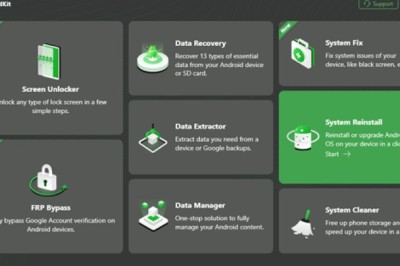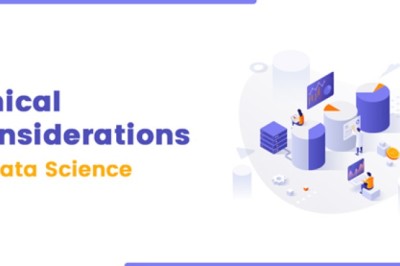views
Introduction
Creating SEO-friendly content is essential for any website looking to increase their organic traffic and visibility on search engines like Google. By optimizing your content for search engines, you can improve your website's ranking in search results, making it more likely for users to find your site. This can lead to increased traffic, more conversions, and ultimately, higher revenue.
Additionally, SEO-friendly content can also help to establish your brand as a credible and authoritative source within your industry, which can further boost your online presence and reputation.
Overall, investing time and effort in creating SEO-friendly content is a worthwhile investment for any business looking to improve their online presence and reach a wider audience.
Tip #1: Conduct Keyword Research
Keyword research is the process of identifying the words and phrases that your target audience is searching for on search engines like Google. By understanding what keywords your audience is using, you can optimize your content to rank for those keywords, making it more likely for your content to be found by users.
Here's how to conduct keyword research:
1. Identify your target audience
Understand who your target audience is and what they are looking for.
2. Use keyword research tools
There are many free and paid keyword research tools available, such as Google Keyword Planner, SEMrush, Ahrefs, etc. These tools allow you to enter a keyword or phrase and see the search volume, competition, and related keywords.
3. Identify long-tail keywords
Long-tail keywords are phrases that are more specific and usually contain 3 or more words. They tend to have lower search volume but also lower competition and are often easier to rank for.
4. Incorporate keywords into your content
Once you have identified relevant keywords, you can incorporate them into your content in a natural way. This includes using keywords in your headings, meta descriptions, throughout the body of the content, and in the URLs.
5. Avoid keyword stuffing
It is important to avoid stuffing keywords into your content in a way that makes it appear unnatural or uncomfortable to read. This can actually harm your SEO efforts. Instead, focus on creating high-quality, valuable content and then incorporating keywords where it makes sense.
By following these steps, you can conduct effective keyword research and create content that is optimized for search engines, increasing the chances that your content will be found by users.
Tip #2: Optimize Headings and Meta Descriptions
Headings and meta descriptions are two important elements that can impact your SEO efforts.
1. Headings: Headings, also known as H1, H2, H3, etc., are used to structure the content on your website and make it easier for users to scan and understand. They also signal to search engines the main topics covered on the page. Use headings to emphasize the main points of your content and include your target keywords in them. Keep in mind that the H1 heading is the most important one and should be used for the title of your page or post.
2. Meta descriptions: Meta descriptions are short summaries of your content that appear below the title in the search engine results. They should be concise and compelling, including your target keywords and providing a clear idea of what the page is about. It is important to keep in mind that while they do not directly affect your search engine ranking, they can impact your click-through rate (CTR) which can affect your ranking.
Best practices for optimizing headings and meta descriptions:
● Keep headings and meta descriptions concise and to the point.
● Use keywords in headings and meta descriptions, but avoid keyword stuffing.
● Make sure headings and meta descriptions accurately reflect the content on the page.
● Use different headings to structure the content and make it easy to read.
● Use a unique meta description for each page on your website.
By following these best practices, you can optimize your headings and meta descriptions to improve your search engine visibility and increase the chances that users will click through to your site.
Tip #3: Create Quality, Relevant Content
Creating high-quality, relevant content is essential for SEO success.Not only does it help to improve your search engine visibility, but it also provides value to your audience and helps to establish your brand as a credible and authoritative source.
1. Importance of providing value to readers
When creating content, it is important to focus on providing value to your audience. This means answering their questions, solving their problems, and providing them with information they can use. By providing value to your audience, you can increase engagement and build trust with your readers.
2. How to create content that answers questions and solves problems:
● Understand your audience: Understand who your target audience is and what they are looking for.
● Research your topics: Conduct research on your topics to gain a deep understanding of the subject matter.
● Use data and statistics: Use data and statistics to back up your claims and make your content more credible.
● Use visuals: Use images and videos to break up text and make your content more engaging.
● Optimize for readability: Use headings, bullet points, and short paragraphs to make your content easy to read.
● Optimize for usability: Make sure your content is easy to navigate and includes internal links to related content on your site.
By following these tips, you can create high-quality, relevant content that provides value to your audience and helps to establish your brand as a credible and authoritative source. You can use a professional paraphrasing tool to rephrase sentences online. This will help to increase engagement, build trust, and ultimately improve your search engine visibility.
Tip #4: Use Internal and External Links
Links play an important role in SEO and can help to improve your website's visibility and credibility.
1. How linking to other relevant content improves SEO:
Links, both internal and external, help search engines understand the structure and hierarchy of your website, and also help establish the relevance and authority of your content. By linking to other relevant and high-quality content, you can signal to search engines that your content is valuable and trustworthy. This can help to boost your search engine visibility and rankings.
2. How to use internal linking to improve website navigation and user experience:
● Use internal linking to organize your content: Use internal linking to help users navigate your website and find related content.
● Use anchor text: Use anchor text to describe the linked content and make it clear what the link is about.
● Use internal linking to promote older content: Use internal linking to promote older content that may still be relevant and useful to your audience.
● Use internal linking to boost the relevance of your content: Use internal linking to connect your pages together and boost the relevance of your content.
By using internal and external links effectively, you can improve your website's navigation and user experience, and also boost your SEO efforts. This can lead to increased organic traffic and improved search engine visibility.
Tip #5: Optimize for Mobile and Voice Search
With the increasing use of mobile devices and voice assistants, it's important to optimize your content for mobile and voice search.
1. How mobile and voice search impact SEO
Mobile search and voice search are becoming increasingly popular, and it's important to optimize your content for these types of search. Mobile optimization includes ensuring that your website is responsive and can be easily viewed on smaller screens. Voice search optimization includes using natural language and long-tail keywords, and also providing direct and concise answers to questions.
2. Best practices for optimizing content for mobile and voice search:
● Make your website mobile-friendly: Use responsive design so that your website can be easily viewed on smaller screens.
● Optimize for local search: Include your business name, address, and phone number on your website to make it easier for users to find you.
● Use natural language: Use natural language and long-tail keywords that reflect the way users speak when searching for information.
● Provide direct and concise answers: Use short, direct answers to common questions to make it easier for voice assistants to understand and provide the information to users.
● Use real and quality images in your content. Sometimes we can’t use images because of irrelevant objects and backgrounds. You can remove background from an image and add another more appealing graphic before uploading.
● Optimize for Featured Snippet: Optimize your content to be featured in the Featured Snippet section on the SERP.
By following these best practices, you can optimize your content for mobile and voice search, which can help to improve your search engine visibility and reach a wider audience. This can lead to increased organic traffic and improved engagement.
Conclusion:
In this blog post, we discussed 5 proven tips for creating SEO-friendly content that can boost your organic traffic.
- Conduct keyword research to identify relevant keywords and incorporate them into your content naturally.
- Optimize your headings and meta descriptions to improve your search engine visibility.
- Create quality, relevant content that provides value to your audience and establishes your brand as a credible and authoritative source.
- Use internal and external links to improve your website navigation and user experience and boost your SEO efforts.
- Optimize for mobile and voice search to reach a wider audience and improve your search engine visibility.
By following these tips, you can create content that is optimized for search engines and provides value to your audience.
However, SEO is an ongoing process that requires constant monitoring and adjustments. There are many resources available for further learning, such as Google's Webmaster Guidelines, Moz, and Search Engine Journal. It's important to stay up to date with the latest trends and best practices in SEO to ensure the success of your online presence.






















Comments
0 comment